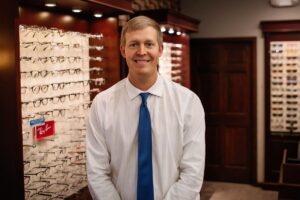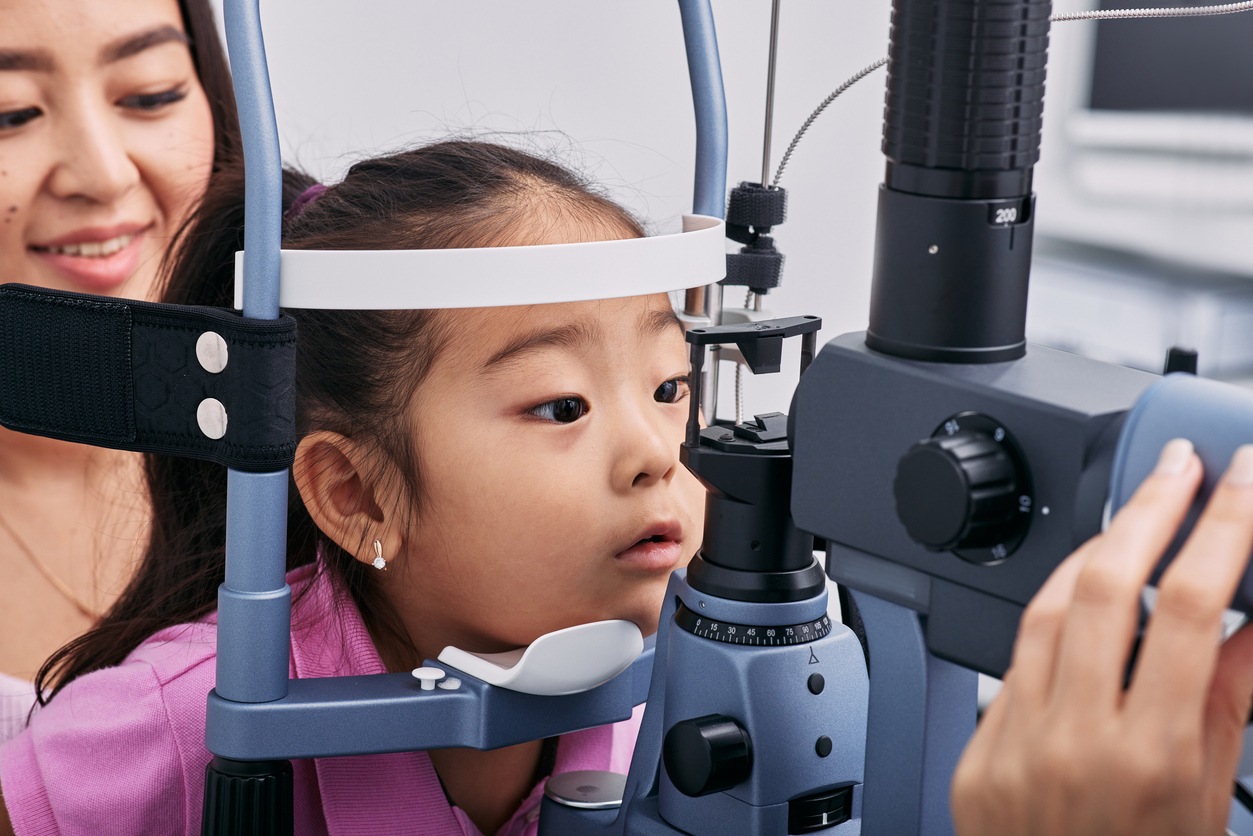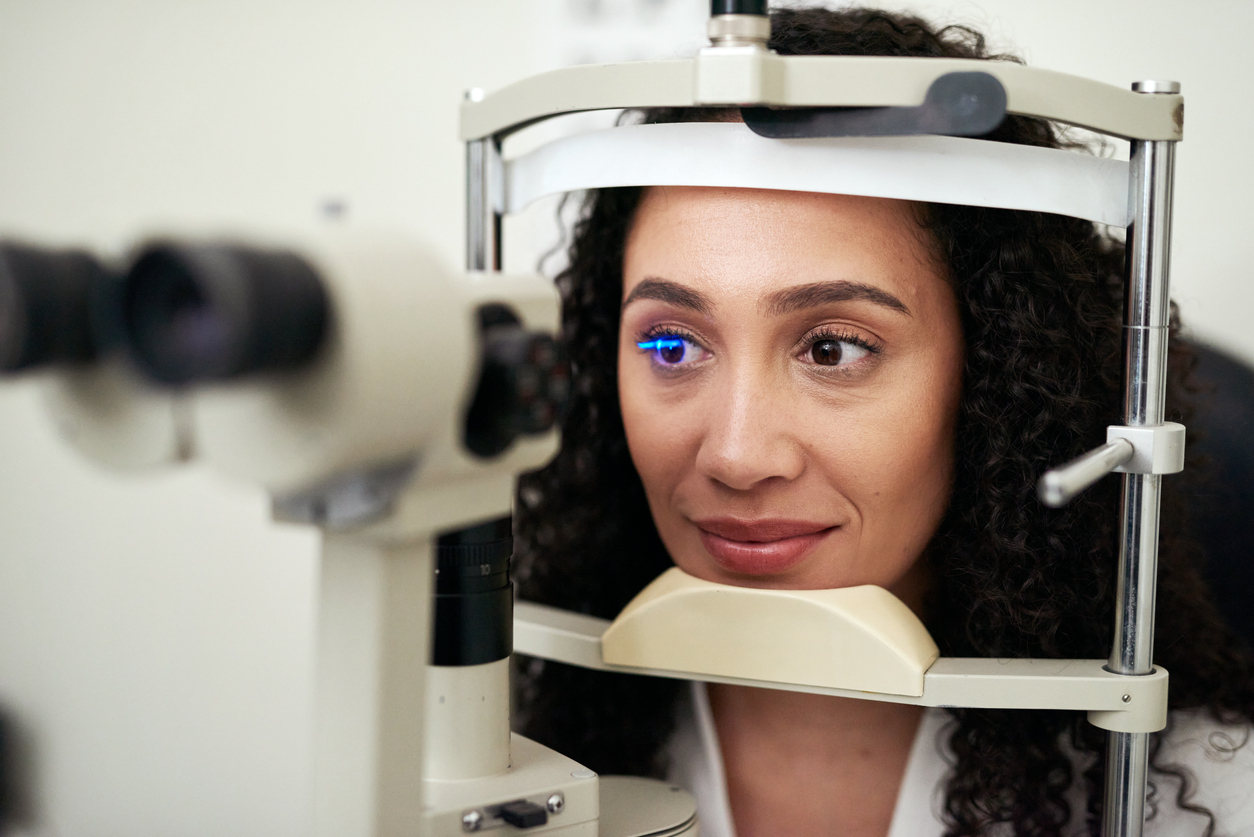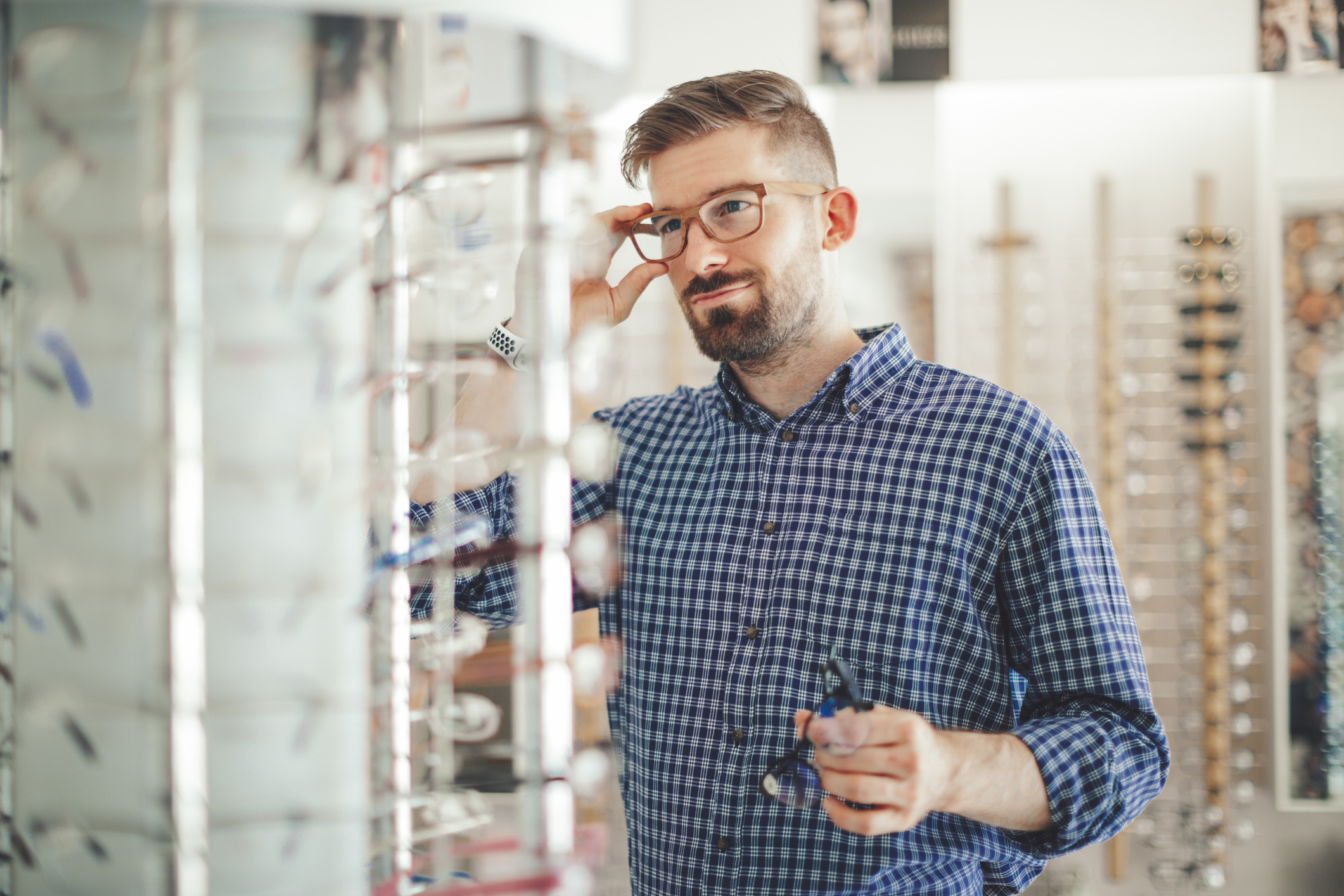As a parent, your little one’s health and well-being are your number one priority. A…
How Often Should You Get An Eye Exam?
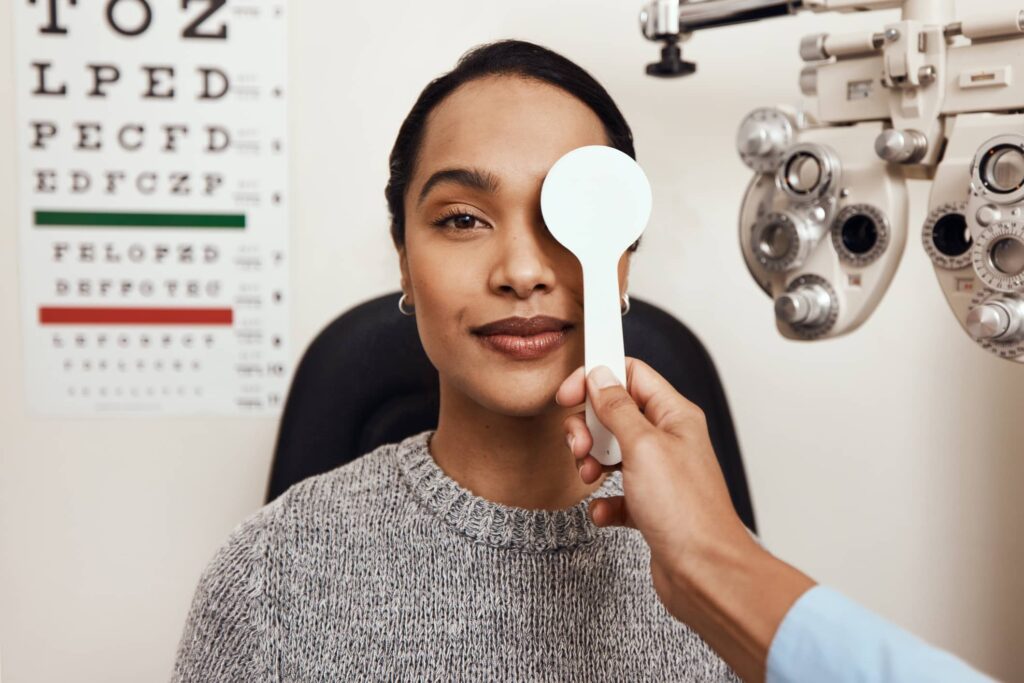
Regular vision checks play a vital role in preventing eye diseases and ensuring your eyesight remains at its best. They not only help detect potential vision problems early but also provide a comprehensive evaluation of your overall ocular health and potential detection of systemic diseases, enabling timely intervention and prevention of further damage.
By understanding the importance of eye doctor visit frequency and the components of a comprehensive eye examination, you can take a proactive approach to safeguarding your vision and catching potential issues before they become serious problems. In this article, we’ll delve into the factors that determine how often you should have your eyes examined and the benefits of adhering to a recommended eye exam schedule.
Continue reading below to learn more about when you should schedule your next eye exam and how Andover & Winfield Family Optometry is your number-one choice for all your eye care needs.
Understanding the Importance of Regular Eye Exams
Regular eye exams are instrumental in detecting eye conditions at an early stage, enabling timely intervention and effective vision care management. The significance of regular check-ups cannot be overstated, as they are crucial for maintaining clear vision and contributing to an individual’s overall health and well-being.
One of the key benefits of routine eye exams is the early diagnosis of eye conditions. Early detection allows for prompt and appropriate treatment, resulting in better outcomes and minimizing the risk of permanent vision loss. In many cases, early interventions can slow down or even halt the progression of several conditions, including:
Glaucoma: Often referred to as the “silent thief of sight,” glaucoma results from increased eye pressure causing damage to the optic nerve. If left untreated, it can lead to vision loss or even blindness. Regular eye exams allow early detection and treatment, preserving vision and managing the disease.
Age-related macular degeneration (AMD): A leading cause of vision loss among older adults, AMD affects the central part of the retina called the macula. Early diagnosis through routine eye exams can help manage the condition, slowing its progression and preserving vision.
Cataracts: This common eye condition occurs when the eye’s natural lens becomes clouded, leading to impaired vision. Timely detection through regular eye exams enables early treatment, preventing further vision loss and improving an individual’s quality of life.
Besides detecting eye problems, comprehensive eye exams also have the potential to uncover underlying health issues like diabetes and high blood pressure. Since these systemic diseases can profoundly impact ocular health, early diagnosis through regular eye exams can prove to be lifesaving.
Recommended Eye Exam Frequency for Different Age Groups
The frequency of eye exams varies depending on a person’s age, as vision changes occur at different life stages.
Children’s Eye Exams
Routine pediatric eye examinations are essential for ensuring proper visual development in children. Early detection and treatment of issues like amblyopia (lazy eye) can lead to more favorable outcomes. The American Optometric Association recommends the following eye exam schedule for children:
- First eye exam at 6 months of age.
- Second eye exam at 3 years of age.
- Subsequent exams every two years for children ages 4 to 17 or as recommended by an eye care professional.
Adhering to this schedule can help identify and address any concerns before they become more severe vision problems.
Adult Eye Exams
Adults should also be diligent with their eye care, as the risk of certain eye diseases tends to increase with age. Vision screening is critical in identifying issues that may arise from age-related vision changes. The American Optometric Association suggests the following guidelines for adults:
- Individuals aged 18 to 39 should have an eye exam every 1-2 years or as recommended by a qualified eye care professional.
- Individuals aged 40 to 64 should have an eye exam every 2-4 years.
- Individuals aged 65 and older should have an eye exam every 1-2 years.
By following these recommended exam frequencies, adults can ensure their vision remains optimal throughout their lives.
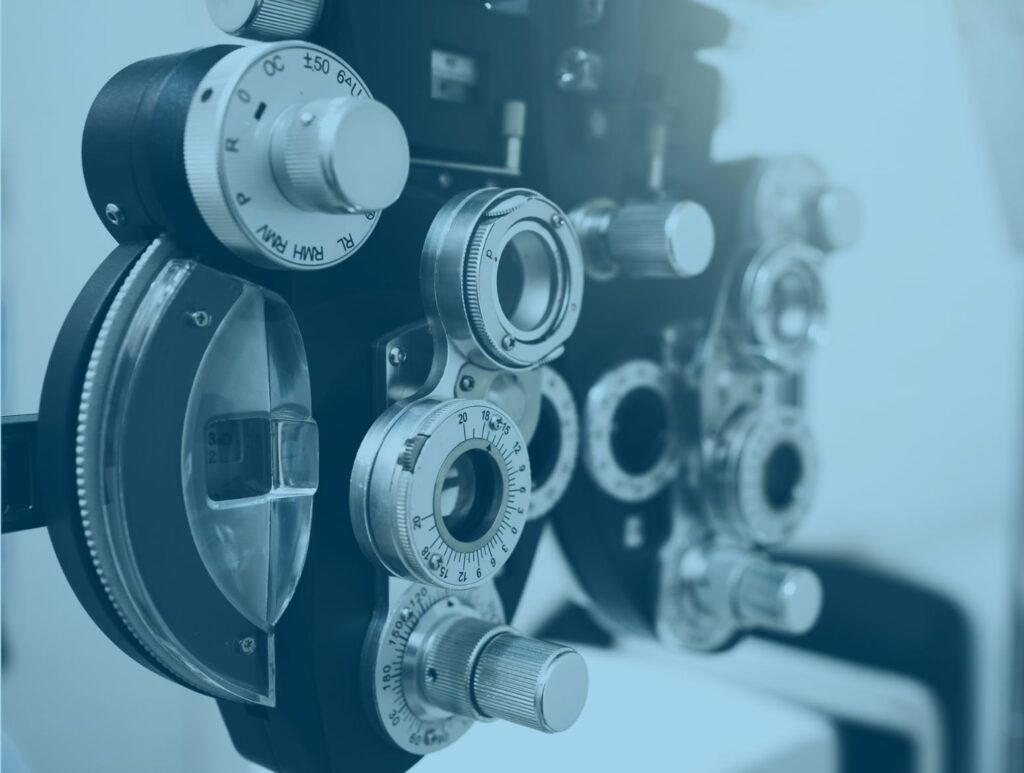
Risk Factors That May Increase the Need for Frequent Eye Exams
While general guidelines for eye exam frequency are useful, certain risk factors may warrant more frequent exams to maintain optimal vision health. These risk factors can include high-risk eye conditions, systemic diseases like diabetes, hereditary factors, and lifestyle choices that impact your vision.
High-Risk Eye Conditions
Individuals with a medical history of eye diseases or conditions such as glaucoma, age-related macular degeneration, or cataracts may need more regular eye exams. It’s essential to consult with your eye care professional to determine an appropriate examination schedule tailored to your specific needs.
Diabetes and Eyesight
Diabetes can have a significant impact on your eyesight, as it causes a higher risk of developing eye problems like diabetic retinopathy, cataracts, and glaucoma. If you have diabetes, it’s crucial to closely monitor your vision health and undergo eye examinations more frequently.
Hereditary Eye Diseases
Family history plays a critical role in your eye health. If you have a family history of eye diseases such as retinitis pigmentosa or congenital cataracts, you may need more frequent eye exams to monitor and manage any potential issues.
What Happens During an Eye Exam?
Various tests and procedures are performed to evaluate your overall eye health and vision during an eye exam. The process typically includes a vision assessment, eye pressure test, slit lamp examination, and an optometrist consultation. Here, we will walk you through common tests and examinations you can expect during a comprehensive eye exam.
Vision Assessment
The first step in an eye exam is a vision assessment, which measures your visual acuity. This evaluates how clearly you can see at different distances. You may be asked to read letters or numbers from a chart placed at a specific distance, typically 20 feet away. This test helps identify any problems with your vision that may require corrective lenses or further investigation.
Eye Pressure Test
An eye pressure test, also known as tonometry, is used to screen for glaucoma, a condition characterized by increased pressure within the eye. During this test, a small, painless puff of air is blown onto your eye, or a specialized instrument is gently placed against it to measure the eye’s internal pressure. Early detection and treatment of glaucoma can help prevent vision loss.
Slit Lamp Examination
A slit lamp examination is a method used to closely examine the structures of your eyes, including the cornea, iris, lens, and optic nerve. An optometrist will use a specialized microscope called a slit lamp to shine a bright, narrow beam of light into your eye. This allows the optometrist to detect any abnormalities or early signs of eye conditions needing further evaluation.
Optometrist Consultation
After completing the tests and evaluations, you will have a consultation with your optometrist. During this discussion, your eye care professional will review the results of your examinations, address any concerns, and discuss any findings. They may also provide recommendations for maintaining optimal eye health, such as scheduling follow-up visits, adjusting your eyeglass prescription, or exploring treatment options for any identified health conditions.
In some cases, your optometrist may recommend additional tests, such as a retinal examination or dilation procedure, which involves using special eye drops to widen your pupils. This allows for a more comprehensive assessment of your eye’s internal structures and can help in the early detection of eye diseases.
Advanced Eye Care Solutions at Andover & Winfield Family Optometry
An integral aspect of protecting your vision is staying informed about your eye care and making decisions based on your health profile, lifestyle, and the advice of qualified eye care professionals. As each person’s situation varies, it is essential to consult with trusted experts to ensure you receive the most accurate and effective guidance for your eye care.
At Andover & Winfield Family Optometry, we understand the importance of your vision, and we remain committed to ensuring your eye health is in the best hands. Our team of experienced optometrists and state-of-the-art facilities are dedicated to providing comprehensive eye exams and personalized eye care solutions.
Contact Andover & Winfield Family Optometry today to schedule your next eye exam and join our community of satisfied patients who trust us with their vision.
About the Doctor
Dr. Matt Boswell was born and raised in Wichita, Kansas, where he graduated from Kapaun Mt. Carmel High School. He attended Emporia State University to play on the Men’s Basketball Team while getting his Bachelor of Science degree in Biology, Pre-Optometry. While there, Dr. Boswell made the academic honor roll every year while receiving all-league honors his senior year. After graduating from ESU, he went to Memphis, Tennessee, and received his Optometry Degree from the Southern College of Optometry in 2016. Dr. Boswell is excited to practice back in Andover and Winfield, where he was a patient of Dr. Holman’s growing up and shadowed him in high school.
Dr. Boswell’s areas of interest are comprehensive primary eye care and ocular disease, including glaucoma, macular degeneration, cataracts, and diabetes. He also loves fitting contact lenses and seeing kids. He is an active member of the American Optometric Association and the Kansas Optometric Association. Dr. Boswell resides in East Wichita with his wife, Kirsten, a nurse. They welcomed their first child in February 2022, Baker. They love the outdoors, playing sports, fishing, and staying active with their Bernese Mountain Dog, Franny.
